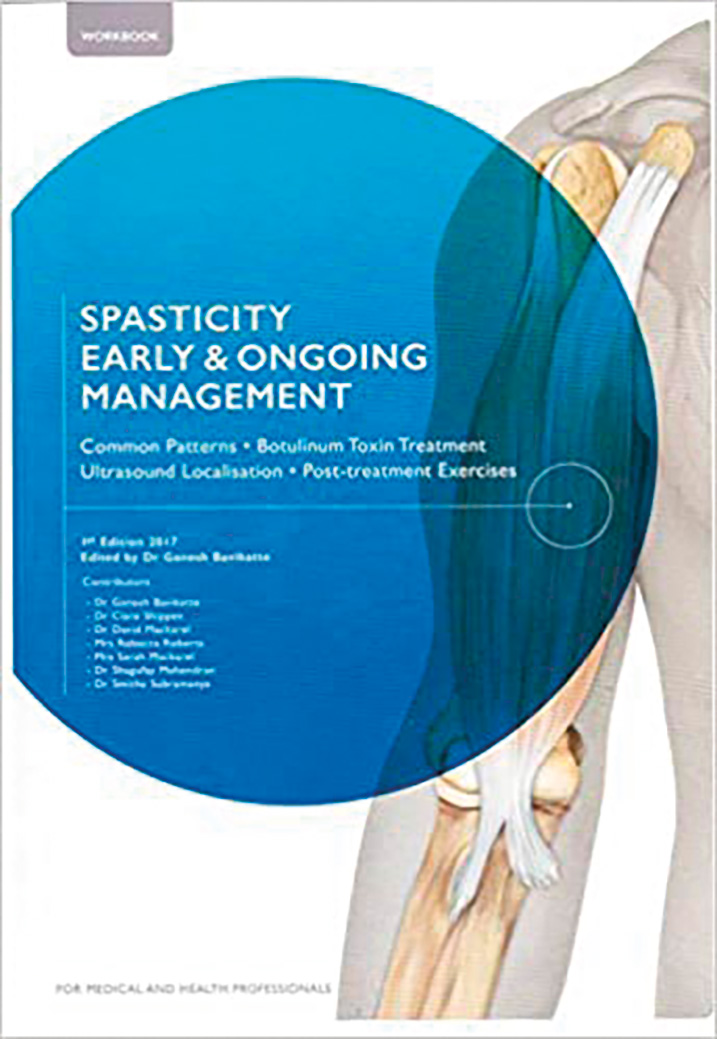As a fresh faced ST3 Rehabilitation Medicine trainee, I was eager to find a book to help me get to grips with the pathophysiology, assessment, and management of spasticity. Luckily, after attending a spasticity course in Liverpool (conducted by the lead author himself) I received this book; I can honestly say that I have used it every week since.
At a first flick through, the book is very pleasing to the eye with a bright, ‘modern’ colour scheme, lots of pictures, and an easy-to-follow layout with handy tabs (colour coded). Section 1 gives an overview of spasticity, explaining pathophysiology, diagnosis, and options for treatment. As a new trainee I found this part extremely useful, but no doubt my senior colleagues will already be familiar with this. Where the real strength of this book lies, however, is in Section 2. This section is a practical guide to ultrasound-guided localisation, injection of botulinum toxin, and post-toxin therapy measures. For example, the section on elbow flexors dedicates a page to each of the main target muscles to explain the dosing for each of the three main brands of botulinum toxin type A, with pictures and tips to help localise injection sites. The pages are uncluttered, and the logical order in which the muscles are presented means you don’t have to keep flicking backwards and forwards. This is followed by the post injection management plan, with examples of exercises for the patient to perform until your next meeting.
Whilst this is all excellent, there are a few aspects to the book that could have been a bit slicker. The main thing that bothered me (and this might just be me being overly fussy) was that text is ‘unjustified’. Don’t worry, I just mean that the text lines vary in lengths down the the page. I have no idea why this bothered me so much; it seemed incongruous with the care taken in organising the actual content. Secondly, some of the pictures aren’t as clear as they could be; this means that a few of the ultrasound pictures are a little difficult to interpret, while some pictures of the ‘live’ model have a greyish quality that makes it seem as if he had recently been pulled from the bottom of a lake. This aside, as already mentioned, I found and still find this book enormously helpful to my clinical practice. Since getting my hands on it, I really have used it every week to guide treatment, to help with injection dosing and localisation, and generally to give me the appearance of competence in front of my seniors!
In summary, has this book improved my management of spasticity? I’d certainly like to think so. Would I recommend this book to others? Definitely, especially for those who wish to gain confidence in the use of ultrasound for localisation. Do I pray for the health of the model? Yes, each and every night.

